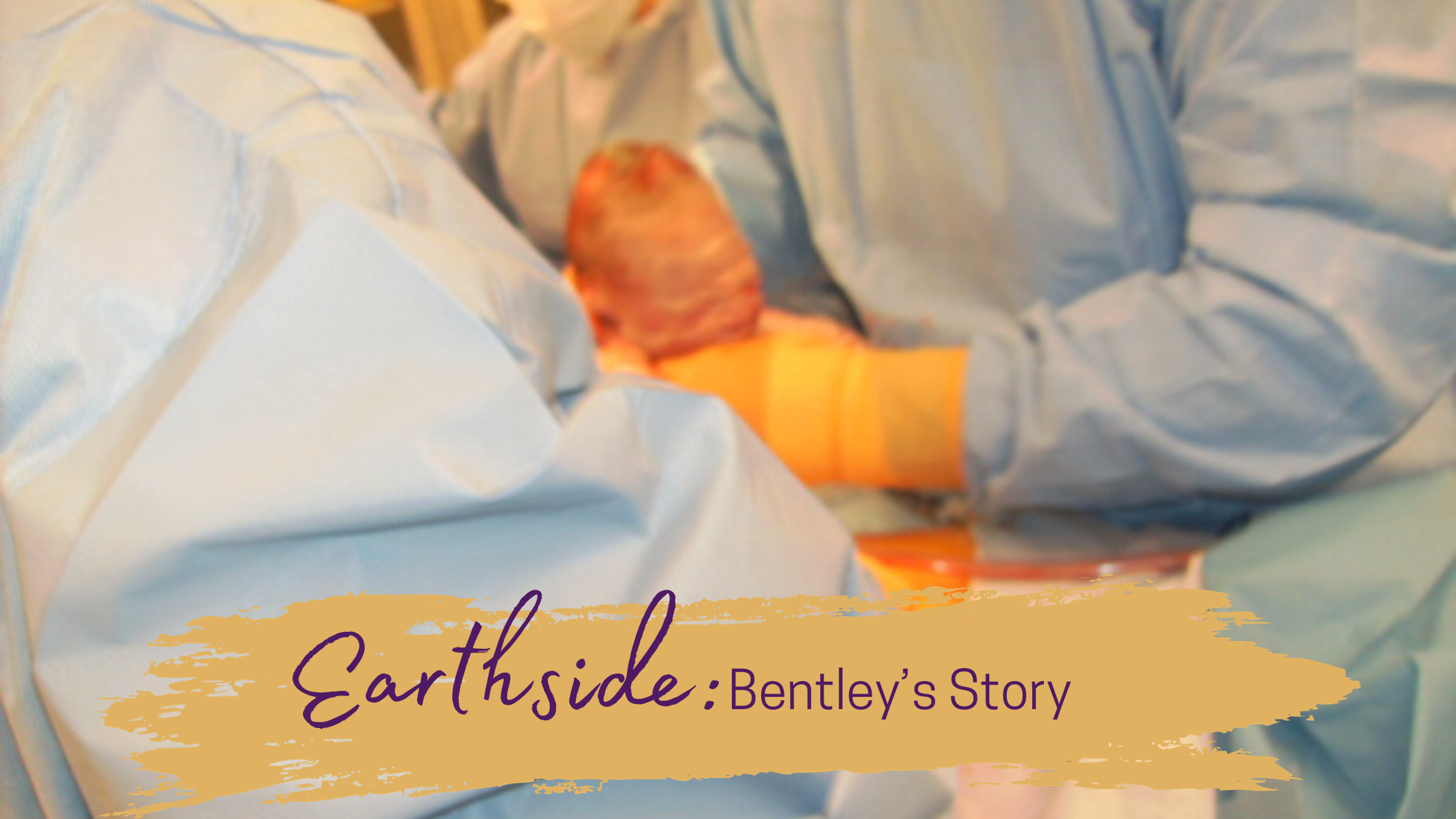1. Earthside: Bentley’s Story
I relish the opportunity to revisit the cherished tales of my children's births, and today, let's journey back thirteen years to the arrival of Baby Bentley. As the sands of time have shifted, so have I – evolving as a person, a woman, and a mother. Armed with newfound knowledge, I'll recount Bentley's birth story with an unbiased pen, acknowledging that every twist and turn has molded me into the birth attendant I am today.
On a poignant Wednesday afternoon, September 22, 2010, emotions ran high as I stepped into that appointment with uncertain expectations. A routine ultrasound at 37 weeks revealed concerns about amniotic fluid levels and the baby's size. This discovery led to a path of twice-weekly Non-Stress Tests (NSTs) and a subsequent ultrasound scheduled for the 39th week.
Our NST went smoothly, showcasing strong accelerations and decelerations in the baby's heart tones at the right moments, and everything looked promising. Notably, my fundal height had decreased from 41 weeks to 38 weeks, indicating that the baby was engaging and preparing for the journey earthside. Despite these positive signs, due to the baby's amniotic fluid level being slightly lower than optimal and his size a bit smaller than preferred, coupled with me being at 39 weeks, the doctor recommended induction. With dilation at 2 centimeters and 50% effacement, my cervix appeared favorable for induction. The doctor performed a membrane sweep with my consent, and I headed home to ready myself for the arrival of my sweet baby boy.
Around 11 pm that night, Ben and I retired to bed to prepare for the next day. I enjoyed a restful sleep until 2:30 am when nature called. From that point on, sleep eluded me. By 3 am, I decided to rise, took a refreshing shower, and tried to have a light snack. I meticulously checked our bags, ensuring we had everything for our hospital stay.
While in the shower, I noticed some slimy discharge in my nether regions, signaling the onset of my mucus plug mixed with a bit of bloody show—an initially gross yet strangely fascinating experience! Around a quarter to five in the morning, pelvic pressure intensified, requiring breathing techniques and movement. At 6 am, we contacted the hospital to secure a room, and thankfully, they had one available. The realization of nerves, emotions, and excitement hit me at that moment. We swiftly loaded up the car, and by 7 am, we were checked in and settled into our temporary home for the next few days.
In Room 278, the stage was set for my sweet baby boy's grand entrance into the vast, luminous world. After soaking in the moment, it was time to get down to business. The initial challenge came with my IV placement, which proved to be quite a feat. My stubborn left hand led to a blown vein, necessitating insertion on the inside of my right arm near the wrist—a considerable hassle. Following the IV setup, Dr. L made his first of many appearances. At just 2 centimeters dilated and 50% effaced, Pitocin was introduced, and we were left to navigate the waves on our own.
Contractions commenced almost immediately, catching me off guard with their intensity. I moved around, shifted between lying on my sides, and vocalized through each contraction. The rapid effectiveness of Pitocin took me by surprise. However, every movement caused the baby's heart tones to vanish. Dr. L suggested rupturing my membranes and inserting internal monitors to better track both the baby's status and the strength of my contractions. Once my membranes were ruptured, the intensity of contractions increased. I engaged in a lot of walking, sitting on the birth ball, and leaning against the bed, both sitting and standing—I kept on the move. When lying down, contractions shifted to my back, indicating a posterior baby position (sunny side up), which is less ideal for labor. Staying upright kept contractions in my belly, suggesting the baby was settling into the optimal anterior position for birth. Throughout, all I could manage was moaning during contractions and focused breathing.
Around 11:15 am, the nurse checked my progress, revealing I had advanced to 3 centimeters dilated while holding at 50% effaced. This news felt disheartening, especially given the intensity of the contractions. The nurse suggested an epidural at this point. After discussing it with Ben, I opted for the epidural, even though I didn't feel an urgent need for it. I thought it might offer me some rest and help the baby descend more swiftly. Exhausted and somewhat apprehensive, I found myself in a room filled with people who weren't quite sure how to support me during contractions. Meanwhile, my spouse was entertaining everyone as if we were hosting a party. The bright, noisy, and chilly room didn't create an ideal birthing environment. At the time, I wasn't even aware of the existence of labor support persons, also known as doulas.
As the epidural was being administered, I found myself dozing off between contractions. The intensity of the contractions was overwhelming, making me feel weak and vulnerable. I hadn't anticipated that my body could endure such intense pain. I reached a point where I needed to concentrate intensely, focus on my breathing, stay quiet, and keep my eyes shut. According to the birthing books I'd read, this should indicate active labor, possibly 4-6 centimeters dilated. While excited in my mind, an odd feeling lingered that pitocin-induced labor might not unfold exactly as described in the textbooks.
An hour post-epidural, another cervical check revealed no progress—still 3 centimeters dilated and 50% effaced. I was puzzled. With the epidural in place, I felt relaxed and serene, lying on my side to keep my pelvis open. Why wasn't my cervix cooperating? What was happening with my body?
Another hour passed with no change, and a catheter was inserted due to the epidural. Deciding to nap, I had Ben fetch the iPod, plugged in my headphones, tuned into "Ocean Relaxation" music, and closed my eyes. After about 20 minutes, a sudden influx of nurses rushed into the room, flipped me onto my left side abruptly, and thrust an oxygen mask onto my face without warning. Terrified, tears welled in my eyes. What was happening? I couldn't ask questions due to the oxygen mask, and I couldn't see my son's heart tones as the screens were on the opposite side from my lying position. What was the commotion all about?
Once Bentley's heart tones stabilized, the nurses clarified that the pitocin was causing intense contractions, spaced 30 seconds to a minute apart, and the baby was struggling to tolerate them. We decided to turn off the pitocin to grant my body and baby a respite. Despite my plea to remove the epidural catheter, they refused. Regretting the epidural decision and realizing the harm it, along with other interventions, was causing, I longed for its removal.
With the pitocin off, contractions spaced out but remained intense, ranging in the 200's. Feeling returned to my feet as the epidural wore off around 3:30 pm. Another cervical check showed no progress. By a quarter after five, there was still no change, despite being anterior with a softer cervix. To kick-start contractions, we reluctantly decided to resume the pitocin.
Cesarean Section discussions were disheartening. Though wanting a healthy outcome, I yearned for a vaginal birth. Continuing with pitocin, we agreed that if the baby showed deceleration with contractions, we'd halt it and prepare for a C-section.
Contractions resumed, decelerations reappeared, and with a worried spouse, we notified the nurses. By 7:45 pm, prepped for surgery, we were wheeled into the operating room. Upon attempting to reestablish the epidural, the anesthesiologist found the catheter pulled out. Opting for a spinal, the loss of sensation in my feet and legs was immediate. Panic set in as I felt the spinal ascend, compounding the challenges of a failed induction.
I persevered with my breathing, though it felt like an arduous task. The effort was crucial; I sensed that diverting my focus might cease my breath altogether. The anesthesiologist attempted to reassure me, yet his concerned expression mirrored my apprehension.
When Ben finally entered the room, a flood of emotions overwhelmed me. Tears flowed for various reasons—I felt I fell short of achieving a healthy, vaginal birth, I grappled with fear over the impending cesarean, and simultaneously, I anticipated the joy of hearing our baby's first cry. Overwhelmed with emotion, I eagerly awaited the moment to hold the little being that had squirmed within my belly for the past nine months.
As the medical team performed their tasks, I experienced intense sensations—tugging, pulling, pressure. Then, the words, "The head is out!" echoed in the room. The subsequent sounds of suctioning were replaced by the sweet melody of my baby's first cry. Overwhelmed with emotion, I burst into tears. Our doctor handed him to a nurse, who carried him to a table behind me. There, they conducted a quick examination, Ben cut the umbilical cord, and the nurse reassured him, "You can touch your baby!" Our precious baby was then brought to me by his daddy, offering a firsthand glimpse of the sweet little life we had created together.
While the medical team worked on stitching me up, Daddy took Bentley to our room. My body was signaling that it had endured enough—breathing became increasingly challenging, nausea intensified, and I struggled to cough due to the difficulty in taking deep breaths. In the midst of it all, I blacked out, uncertain of the duration. When I regained consciousness, the anesthesiologist seemed oblivious to my brief lapse.
Eventually, I was wheeled into my room, where the long-awaited moment finally arrived—I got to see and hold my baby! Cradling him close, I kissed his tiny face and marveled at his delicate fingers curling around mine. Instantly, a wave of love washed over me as I couldn't fathom that this precious little being was entirely ours. We cherished every moment, gazing in awe at our baby, who was then weighed, measured, and gently bathed.
Bentley Jacob
September 23, 2010 at 8:24pm
6lbs 14oz & 18.5”
Stay Wild & Free,
-Brandy
Want to learn how to have an undisturbed birth?
>>CLICK HERE<<
to dive into this complimentary guide, unraveling the secrets of key hormones that orchestrate the symphony of childbirth, and discover 10 invaluable tips for crafting a birth plan that celebrates an undisturbed journey.
Let the wisdom of hormones guide you to a birthing experience that is both empowering and seamless!

















